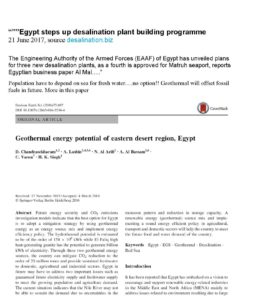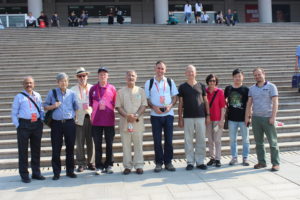Now it is official. Standards for geothermal energy is set to be followed by all the countries. All the geothermal quacks, who really degraded this energy with their shallow knowledge have to go back to their drawing boards and understand simple things like “tariff fixation”. Half knowledge, so called scientific community, working in high profile organization need to understand now that there is science behind to fix geothermal tariff.
The United Nations Economic Commission for Europe (UNECE) Committee on Sustainable Energy recently approved a global standard for reporting geothermal resources. According to the International Geothermal Association (IGA), UNECE approved the Specifications for Application of the United Nations Framework for Fossil Energy and Mineral Reserves and Resources 2009 (UNFC) to Geothermal Energy Resources. “In a manner consistent with the aim of the IGA, and led by Professor Gioia Falcone, the UNFC Geothermal Working Group of the IGA Resources and Reserves Committee has now produced a set of specifications for classifying, comparing and reporting estimates of geothermal potential, resources and reserves,” IGA President Juliet Newson said in an Oct. 5 statement. “The specifications will now be maintained through regular review, through a transparent governance structure, and process, that allows input from all stakeholders.”
The members of the IGA Resources and Reserves committee include:
Miklos ANTICS, Paul Brophy, Dornadula Chandrasekharam,
Luis Carlos Gutiérrez-Negrín, Horst Kreuter, Jim Lawless
Juliet Newson , “Atty. Fernando S. Peñarroyo, Ladsi Rybach, Horst Rueter
Benedikt Steingrímsson, “paolo.conti, Zhonghe Pang, Eduardo Iglesias Rodríguez , Inga Moeck, Gioia Falcone, Meseret Teklemariam Zemedkun
Colin Harvey, Beata Kepinska, Paolo Romagnoli, Albert Genter, Kasumi Yasukawa, Surya Darma, Sadiq Zarrouk, Colin Williams, Alison Thompson,Geoffrey Giudetti, Gordon Bloomquist, Manfred Hochstein, Hugo Fernando Navas, Janos Szanyi, Marek Hajto
The IGA said that having an international system and a standardized terminology for reporting geothermal resources will build trust and understanding of the geothermal industry with investors, regulators and the general public. The work to develop the UNFC geothermal specifications was carried out under UNECE’s Memorandum of Understanding with the IGA. Scott Foster, director of the sustainable energy division of UNECE, noted during the UNECE’s 25th session on Sept. 30: “The 2030 Agenda for Sustainable Development has just celebrated its first anniversary. Application of UNFC to renewable energy resources is a priority for our member states, and inclusion of geothermal energy in UNFC will help to attain Sustainable Development Goal #7 by improving the positioning of geothermal within the policy and investment communities.”
Now it is high time that the ministry of new and renewable energy read this document carefully, understand and redraft its policy document. It is still not clear whether geothermal falls under ministry of power or ministry of new and renewable energy. Looks line no one is serious in developing this energy. Now countries are looking at deep geothermal by harnessing heat from the granites….as has been done by France and Australia and very soon by USA. India has a very large volume of such granites and several reports and papers have appeared on the potential of these granites. Who viewed these papers or who read these reports?? In fact in the world geothermal congress or world renewable energy conferences the Indian VIPs were never seen in the round table conferences. It is high time that India brings out a policy to delegate only the competent people to attend the meetings and conferences. For the benefit of developing geothermal as a powerful source of renewable energy, quacks should be kept away from such meetings. During one of the group discussions related to geothermal, one senior scientist suggests that the tariff for geothermal should be fixed at Rs 7 per unit. When asked how this number is arrived…the scientists blinks….his attitude is ,,,float a fancy number so that he will be quoted in the media


